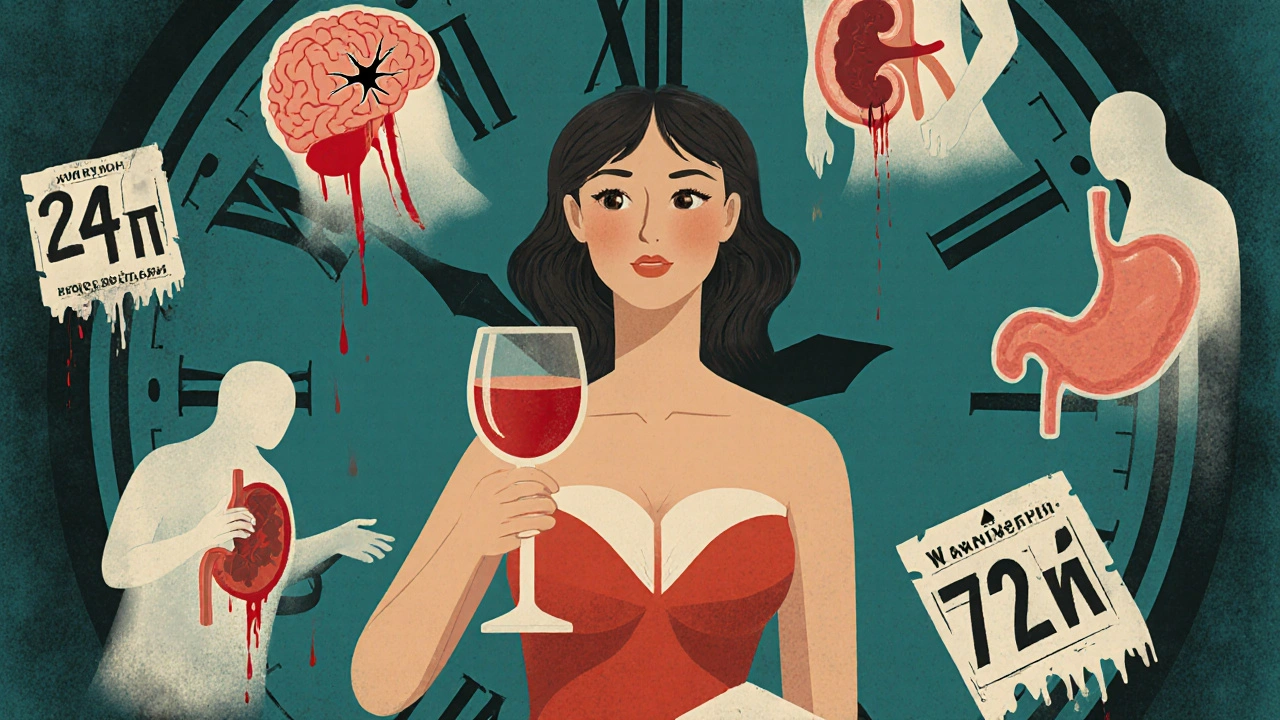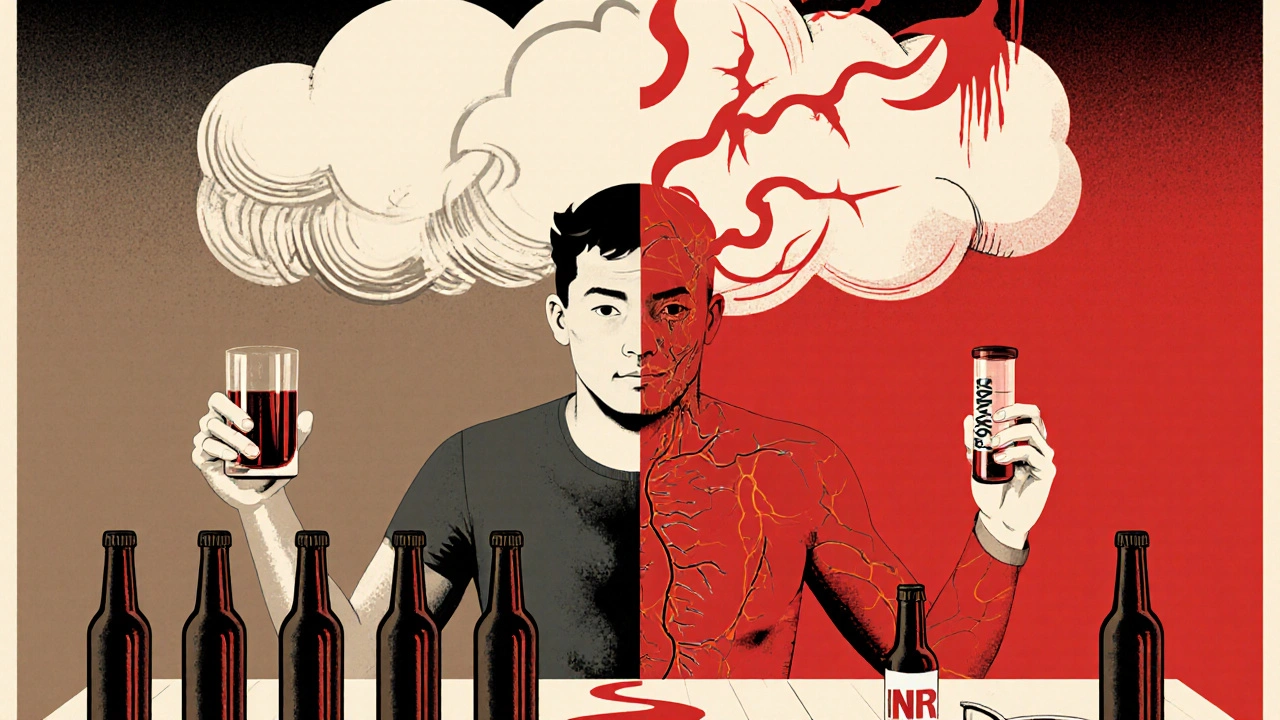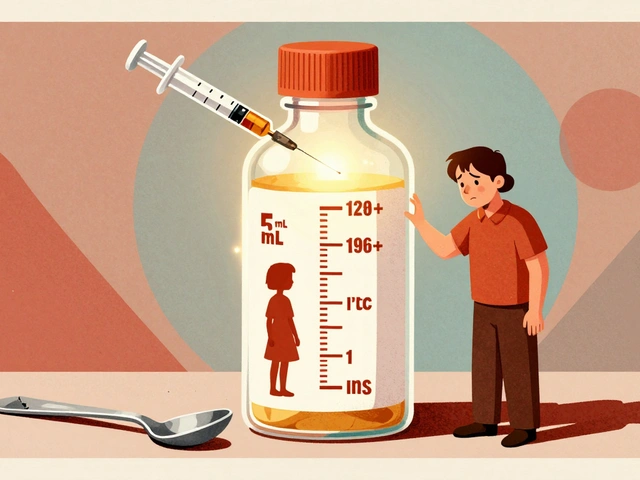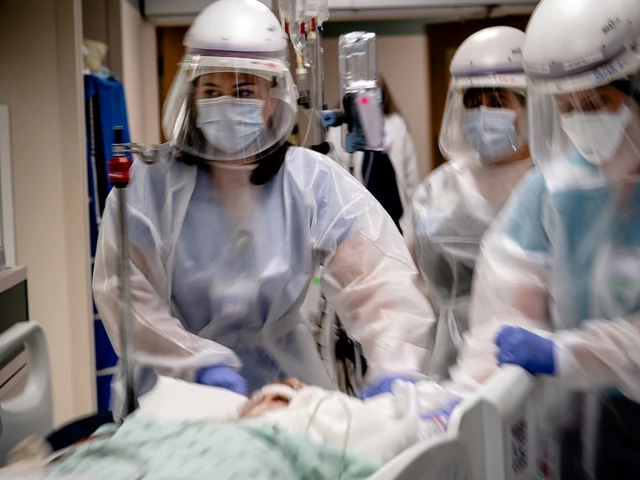Binge Drinking Calculator for Warfarin Patients
Calculate Your Binge Drinking Risk
This tool helps you determine if your alcohol consumption qualifies as binge drinking while on warfarin and explains the associated bleeding risk.
If you're on warfarin, drinking heavily in one sitting isn't just a bad idea-it can land you in the hospital. Warfarin, a blood thinner used for conditions like atrial fibrillation and deep vein clots, already carries a 3-6% annual risk of serious bleeding. Add binge drinking to the mix, and that risk can jump by more than double. This isn't speculation. It's backed by multiple clinical studies, government health agencies, and real-world patient data.
What Counts as Binge Drinking?
The National Institute on Alcohol Abuse and Alcoholism (NIAAA) defines binge drinking as consuming 5 or more standard drinks in about 2 hours for men, and 4 or more for women. A standard drink is:
- One 12-ounce beer (5% alcohol)
- One 5-ounce glass of wine (12% alcohol)
- One 1.5-ounce shot of hard liquor (40% alcohol)
That means two or three drinks at a party might seem harmless-but if you knock back five beers in an hour, you’ve crossed into dangerous territory. And if you’re on warfarin, your body doesn’t handle that kind of spike the same way it used to.
How Alcohol Messes With Warfarin
Warfarin works by blocking vitamin K, which your liver needs to make clotting proteins. Your doctor checks your INR (International Normalized Ratio) to make sure it’s in the safe zone-usually between 2.0 and 3.0. Too low, and you’re at risk of clots. Too high, and you’re at risk of bleeding.
Alcohol throws this balance off in two opposing ways:
- Short-term (acute) use: Alcohol temporarily blocks the liver enzymes (CYP2C9 and CYP3A4) that break down warfarin. This means warfarin builds up in your blood, your INR spikes, and your bleeding risk goes up-sometimes within hours.
- Long-term (chronic) use: Heavy drinking over weeks or months damages your liver and speeds up warfarin breakdown. Your INR drops, making you vulnerable to clots. Then, if you stop drinking suddenly, your INR can swing back up dangerously high.
This back-and-forth makes it nearly impossible for your doctor to predict the right warfarin dose. One week your INR is perfect. The next, after a weekend binge, it’s off the charts.
The Numbers Don’t Lie
A 2015 study of over 1,000 warfarin patients found that those who binge drank had a 2.3 times higher risk of major bleeding-like internal bleeding, brain hemorrhages, or uncontrolled nose or gum bleeding. For people who’d been on warfarin for more than a year? The risk jumped to 3.1 times higher.
And it gets worse if you have certain genes. About 1 in 10 people carry a variant (CYP2C9*2 or *3) that slows warfarin metabolism. For them, binge drinking raises bleeding risk by 4.2 times. That’s not a small increase-it’s a medical emergency waiting to happen.
The British Heart Foundation, NHS, and University of Iowa all agree: it’s not about how much you drink in a week-it’s about how much you drink in one sitting. Even if you stay under the 14-unit weekly limit, having all 14 in one night is just as dangerous as drinking 20 units spread out.

What Counts as a “Safe” Amount?
There’s no perfect answer, but most guidelines are clear:
- Men: No more than 2 drinks per day, and never more than 3 in one sitting.
- Women: No more than 1 drink per day, and never more than 2 in one sitting.
And here’s the kicker: you should never drink all your weekly allowance in one day. That’s the definition of binge drinking-and it’s the exact pattern that triggers INR swings.
Some patients do fine with one glass of wine a night. Others can’t touch it at all. The only way to know? Regular INR checks. If you drink-even moderately-your doctor should check your INR more often, especially after any alcohol use.
Warning Signs You’re Bleeding
Warfarin-related bleeding doesn’t always come with a loud alarm. Sometimes, it’s quiet. Here’s what to watch for:
- Unusual bruising, especially large patches without injury
- Nosebleeds that won’t stop
- Bleeding gums when brushing teeth
- Red or brown urine
- Black, tar-like, or bloody stools
- Coughing up blood or vomiting blood (or coffee-ground-looking material)
- Severe headaches, dizziness, or weakness
- Excessive menstrual bleeding
- Abdominal pain with no clear cause
If you notice any of these after drinking, get medical help immediately. Don’t wait. Don’t assume it’s “just a hangover.”
What About Newer Blood Thinners?
Many people switch from warfarin to DOACs (direct oral anticoagulants) like rivaroxaban, apixaban, or dabigatran because they don’t need regular INR checks. But here’s the truth: alcohol still raises bleeding risk with these drugs too.
The FDA’s adverse event database shows a 1.8-fold increase in gastrointestinal bleeding with rivaroxaban in people who drink heavily. The risk isn’t as dramatic as with warfarin, but it’s still there. And unlike warfarin, there’s no easy way to reverse DOACs in an emergency.
So switching to a DOAC isn’t a free pass to drink heavily. It just means your bleeding risk is harder to detect before it’s too late.
What Should You Do?
If you’re on warfarin and drink alcohol:
- Avoid binge drinking at all costs. One night of heavy drinking can undo weeks of stable INR control.
- Stick to moderate limits. One or two drinks, spread out over days, is safer than a weekend binge.
- Tell your doctor. Don’t hide your drinking. They need to know to adjust your monitoring schedule.
- Get INR checked after any alcohol use. If you drank heavily, ask for a test within 72 hours.
- Consider alternatives. If you struggle to cut back, talk to your doctor about switching to a DOAC-or getting help for alcohol use.
And if you’re trying to quit? You’re not alone. A 2022 study showed that patients who got coordinated care from both addiction specialists and anticoagulation clinics reduced their bleeding risk by 52% over a year. That’s not a small win-it’s life-saving.
Why This Isn’t Common Knowledge
It’s strange, but true: the FDA removed warfarin’s official warning about alcohol in 2010 because they said the evidence wasn’t strong enough. But since then, multiple high-quality studies-including one from the University of Michigan with over 1,000 patients-have proven the opposite.
In 2022, the American College of Physicians formally asked the FDA to reinstate the warning. So far, they haven’t. That means the burden falls on you and your doctor.
And here’s the worst part: only about 15% of primary care doctors routinely screen their warfarin patients for alcohol misuse. If you’re not being asked, you need to bring it up first.
Final Thought: It’s Not About Perfection
You don’t have to be perfect. You don’t have to quit alcohol forever. But you do need to be honest-and careful. One night of heavy drinking can send your INR into the danger zone. And if you’re bleeding internally, you won’t feel it until it’s too late.
Warfarin saves lives. But it’s a powerful tool-and like any tool, it can hurt you if you use it wrong. Alcohol isn’t just another variable. It’s a wildcard. And when you’re on warfarin, you can’t afford to gamble with it.
Can I have one drink while on warfarin?
Yes, one standard drink (like a small glass of wine or a bottle of beer) occasionally is usually safe for most people on warfarin. But it must be occasional-not daily-and never paired with binge drinking. Always check your INR after drinking, and never drink on an empty stomach. Alcohol increases warfarin’s effect, so even one drink can cause a spike if you’re sensitive.
How long after drinking should I wait before checking my INR?
If you binge drank, get your INR checked within 72 hours. Alcohol’s effect on warfarin can peak within 24-48 hours. Waiting longer risks missing a dangerous spike. If you had just one drink, you can wait until your next scheduled test-but tell your clinic so they can watch for trends.
Does beer affect warfarin differently than wine or spirits?
No. The type of alcohol doesn’t matter-it’s the amount of ethanol that counts. A 12-ounce beer, 5-ounce wine, and 1.5-ounce shot all contain about the same amount of alcohol. What matters is how much you consume in a short time. Binge drinking any kind of alcohol raises your bleeding risk equally.
Can I drink alcohol if I switched to a DOAC like Eliquis or Xarelto?
You can, but with caution. DOACs don’t interact with alcohol the same way warfarin does, but heavy drinking still increases your risk of bleeding-especially in the stomach and brain. The FDA has recorded cases of serious bleeding in DOAC users who drank heavily. Stick to the same limits: no more than 1-2 drinks per day, and never binge. There’s no safety net with DOACs like there is with warfarin’s INR tests.
Why do some people on warfarin drink without problems?
Some people metabolize warfarin faster or have genetic variants that make them less sensitive to alcohol’s effects. But you can’t know if you’re one of them without testing. The fact that someone else drinks safely doesn’t mean it’s safe for you. INR swings are unpredictable-and one bad episode can be fatal.
What if I can’t stop binge drinking? Should I still be on warfarin?
If you have alcohol use disorder and are on warfarin, you’re at very high risk. Talk to your doctor about switching to a DOAC-but also ask for help with your drinking. Integrated care programs that treat both conditions together have been shown to cut bleeding risk by over half. Your life depends on addressing both issues at once.
Can I drink alcohol before a blood test for INR?
No. Drinking alcohol within 48 hours of your INR test can give a false reading-making your result look worse than it is, or hiding a dangerous spike. Always avoid alcohol for at least two days before your test. And tell your clinic if you drank recently, even if it was just one drink.





9 Comments
Sara Mörtsell-28 October 2025
Look i get it you wanna live but warfarin ain't a suggestion its a leash and alcohol is the dog pulling
one drink maybe fine but five beers in an hour? you think your liver gives a fuck about your INR? no it's just gonna throw up its hands and let the bleeding start
my uncle did this. ended up in the ER with a brain bleed. they said if he'd waited 2 hours longer he'd be dead
so yeah stop pretending you're special. you're not
Rhonda Gentz-29 October 2025
It's strange how we treat warfarin like it's some fragile relic from the 1950s while ignoring that modern medicine has moved on
But here's the truth - we're still using a drug that requires constant monitoring because we haven't figured out how to make it safe without it
And alcohol? It's not the villain. It's the mirror. It shows us where we're still playing Russian roulette with our biology
Maybe the real issue isn't drinking - it's that we're still forcing people to live in the shadow of outdated pharmacology
DOACs exist. They're better. But access? Cost? Insurance? That's the real system failure
We blame the patient for drinking while the system refuses to give them a safer option
That's not medical care. That's negligence dressed up as caution
Alexa Ara-29 October 2025
Hey if you're reading this and you're on warfarin - you're doing better than you think
Even just being here means you care. That's huge
One drink, once in a while, with your dinner? That's not weakness. That's balance
But if you're thinking about bingeing? Stop. Just stop. For one week. See how you feel
You don't have to quit everything. Just protect yourself. That's enough
I've seen people turn their lives around by just adding one rule: no drinking before my INR check
It sounds small. But it saves lives
You got this. And you're not alone
Olan Kinsella-29 October 2025
Let me tell you something my friend in Lagos taught me - in Africa we don't have fancy INR machines
We have intuition. We have elders. We have silence after the third drink
Warfarin? It's not a drug. It's a contract with death
And alcohol? It's the devil knocking on your door with a bottle and a smirk
They say 'one drink' - but one drink becomes two, then five, then you're laughing with your friends while your blood turns to water
And when you wake up bleeding? No one's there to hold your hand
So don't be cute. Don't be clever. Just don't drink
Or if you do - pray harder than you ever have
Kat Sal-30 October 2025
Y'all are overcomplicating this
It's not about perfection. It's about awareness
I'm on warfarin. I have one glass of wine on Friday nights. Always with food. Always after my INR check
My doc knows. We track it. No drama
And guess what? I'm still alive. Still dancing. Still living
You don't have to be a saint. Just be honest. With yourself. With your doctor
That's the whole secret
Rebecca Breslin-31 October 2025
Anyone who says 'one drink is fine' is dangerously naive
Warfarin is not like insulin or blood pressure meds
It's a chemical grenade with a pin you can't see
That 2.3x bleeding risk? That's not a statistic - that's your cousin, your neighbor, your dad
And DOACs? Don't even get me started. They're expensive, irreversible, and the FDA barely monitors them
Real talk? If you're on anticoagulants and you drink - you're already gambling
And the house always wins
Kierstead January- 1 November 2025
Americans think they can drink like Europeans and still have perfect healthcare
Wrong
Warfarin is a precision tool. Alcohol is a sledgehammer
And if you're drinking 'moderately' but still getting INR swings? That's not 'moderate' - that's denial
Stop romanticizing your drinking habits
It's not a lifestyle. It's a death sentence with a wine glass
And if you think your 'one glass' is safe - go get your INR tested tomorrow. Then come back and tell me it's fine
Imogen Levermore- 2 November 2025
soooooo… the FDA removed the warning because the evidence wasn’t strong enough? 🤔… but then 1000+ patient studies prove it? 🤨… and now the American College of Physicians is begging them to put it back? 🤯… i think the FDA is just scared of lawsuits from big pharma or something idk maybe they’re all in on it 🤫🍷 #conspiracy #warfarin #alcohol #donttrustthegovt 😅
Chris Dockter- 4 November 2025
I'm the author and I've seen this play out too many times. One guy drank 6 beers on Saturday. INR was 2.8 Friday. Monday it was 8.9. He had a GI bleed. Almost died. He said 'but I only had a few.' No. You had a warfarin grenade. And you pulled the pin. Don't be that guy. Don't be that girl. Just don't. One drink? Maybe. But never more than that. Ever. Your life isn't worth the hangover.